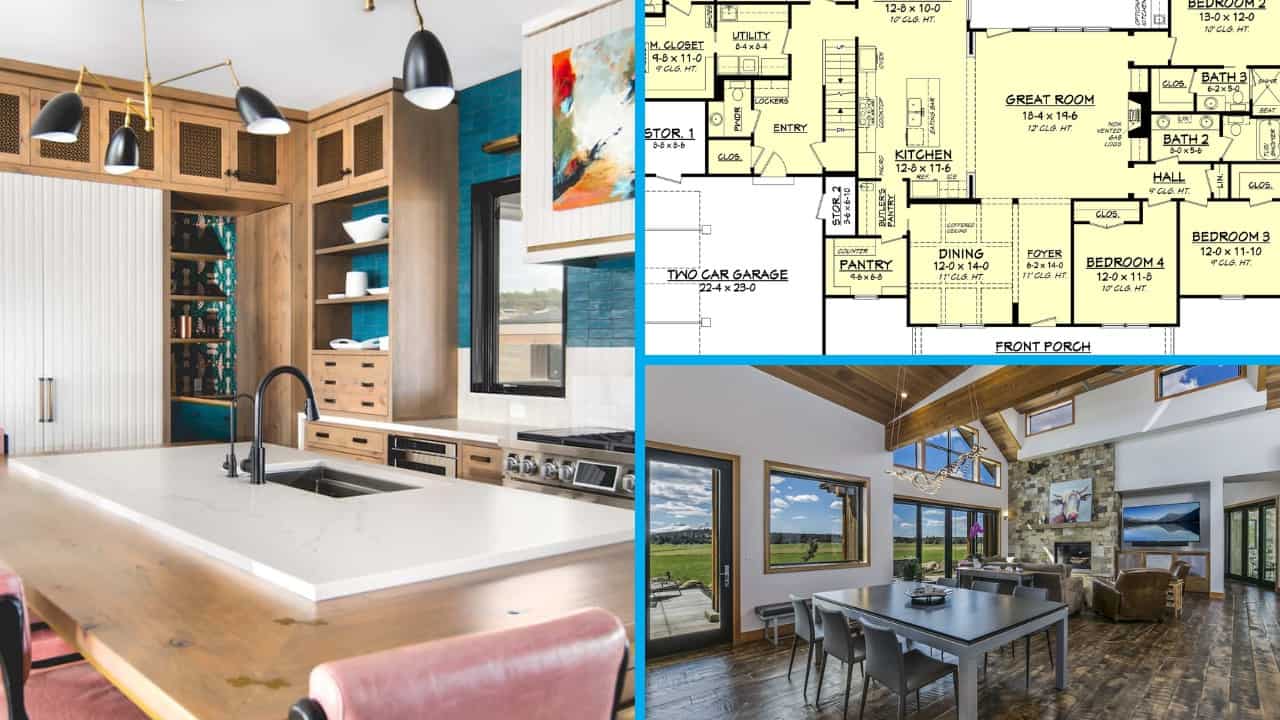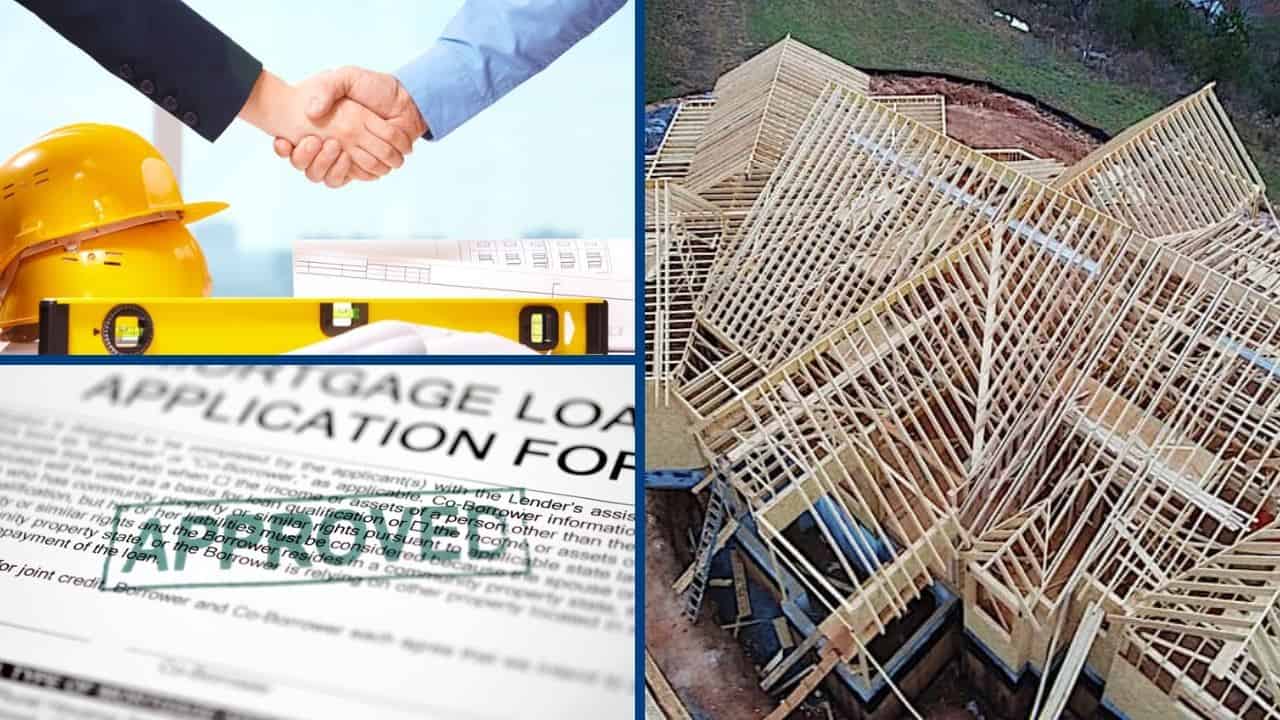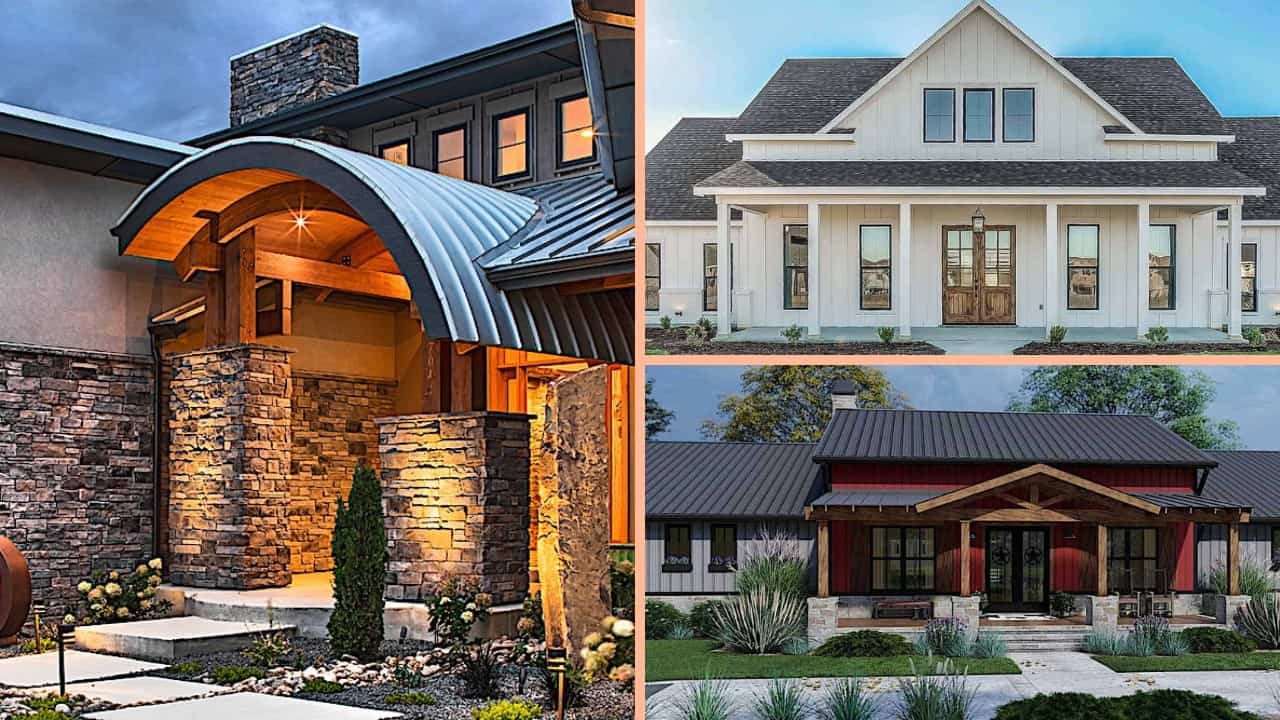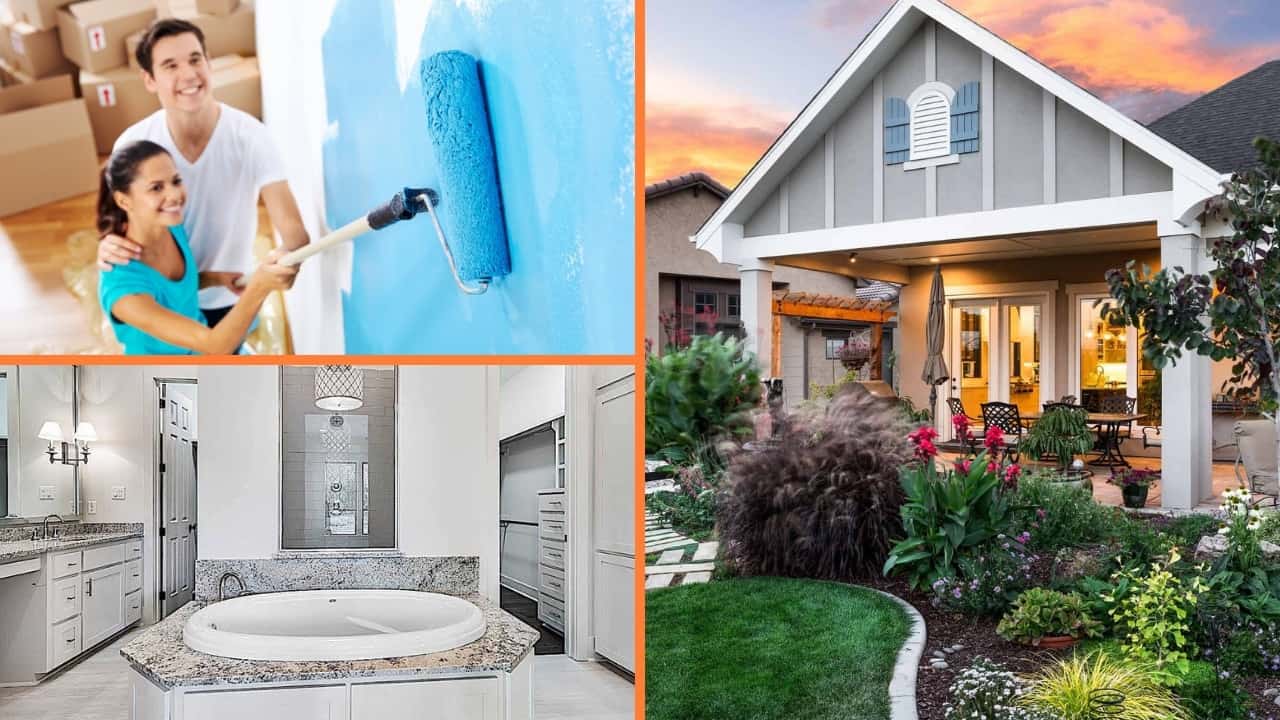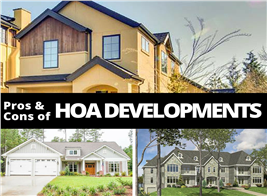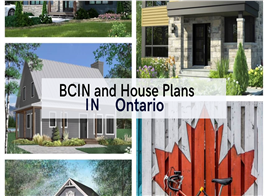Average Cost to Frame a House — Framing Lumber & Steel Prices
By Tim Bakke | Updated November 20, 2023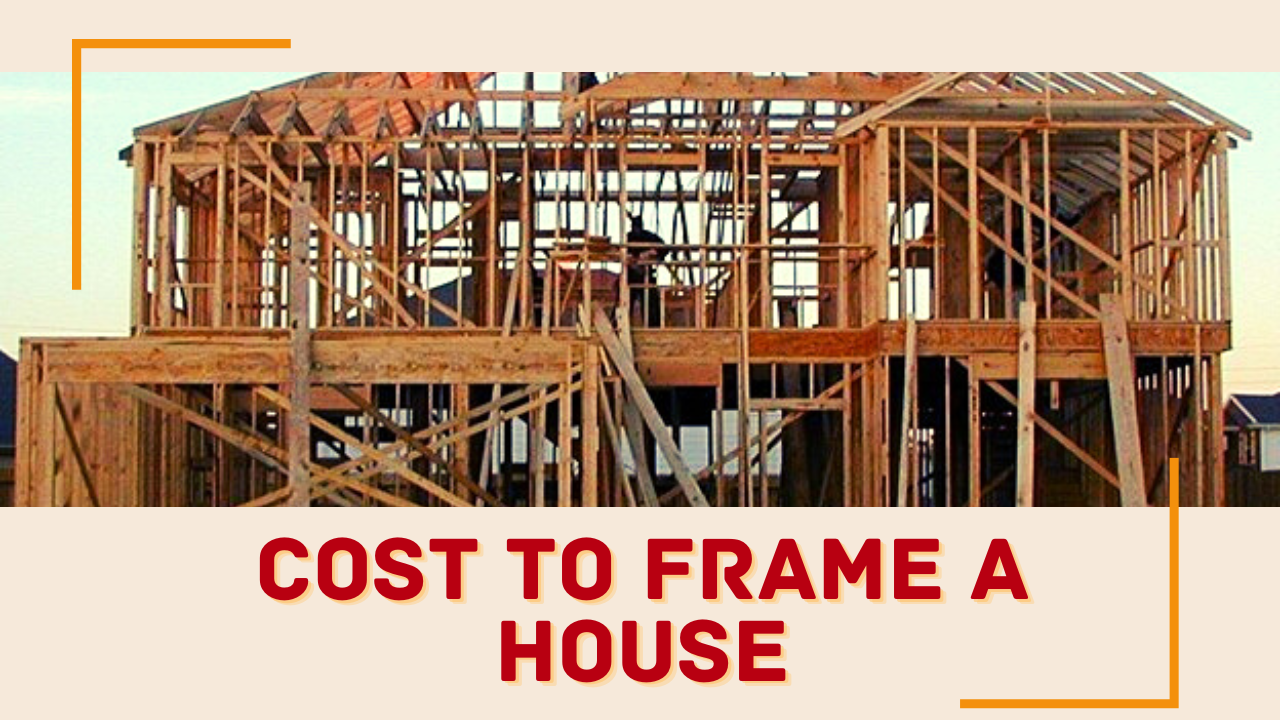
Exploring the Cost to Frame a House
When you’re a potential homeowner building a new home, setting up the framing is the first step to bringing your blueprints to life. A home’s frame is essentially its skeleton, so it's crucial in supporting all the other elements.
The most common material for framing a home is lumber. However, steel may also be used, which is gaining market share over wood frames. No matter which one you choose, it will serve the same purpose: a base for the flooring, roofing, windows, doors, and insulation of the home.
Below, you'll learn what’s involved in framing a new home, the best materials to use, and how much it typically costs (including the different factors that can impact pricing) so that you can make the best choices for your build.
If you’re thinking about building a dream house like this Modern Farmhouse style home, you’ll surely be concerned about cost, which includes framing costs. There are a lot of details involved in framing a house that can affect the cost, some you can control, some you probably can’t.
How to Frame a House
Once your home’s foundation is completed, it’s time to start framing. The most popular method is platform-frame construction, in which walls sit on top of subflooring. If your home has more than one level, then it’s built one story at a time, with each floor serving as a platform for the one above it. Next, there are wall studs and ceiling and floor joists about every 16 or 24 inches along the floor. Then comes the sheathing to add more protection to the frame – and finally, the roof. Read more about possibilities for roof frames in your build.
How Much Do Materials Cost?
The cost of framing materials depends on the material you choose, lumber or steel.
Lumber Costs
A typical 2,000-square-foot home uses almost 16,000 board feet of lumber and 6,000 square feet of structural panels like plywood. After having risen steadily over the past decade due to restrictions on timber harvesting in the Pacific Northwest, lumber prices have experienced a roller coaster in recent years due to the Covid pandemic supply chain issues and, more recently, inflation, making the framing of a home a costly component of building construction projects. Fortunately, lumber prices meaningfully declined today, from a peak of over $1400 per 1,000 board feet in June 2021 to a more manageable $370 per 1,000 board feet at the end of calendar 2023. For the most current graph of cost estimates, please click here.
Source: NAHB
Steel Costs
Light construction structural steel is becoming a popular alternative to lumber in parts of the US. This material is fabricated off-site and delivered and erected on site quickly; it may cost less than lumber, especially when you factor in labor and the extreme cost of lumber brought on by the effects of Covid-19. Based on current information from United States Steel, a steel frame house has an average cost between $9.50 and $11 per square foot, meaning that the total cost for a 2,000-square-foot home falls between $19,000 and $22,000. Of course, fabrication, delivery, and assembly costs are additional.
This view of a Ranch style home framed out in steel on a concrete slab foundation is a great example of structural steel used for light residential construction (Plan #117-1143).
What Are the Other Costs Associated with Framing a House?
Besides the lumber (or steel) you'll need to erect the house, you'll have to factor in at least four other variables just to get the skeleton of the house up: the size of the home, type of framing, labor costs, and sheathing material.
Square Footage of House Plan
A large home means higher lumber or steel costs because you don’t typically get bulk discounts (unless you’re a great negotiator). So make sure you are building just what you need and within your means. If you’re unsure about the amount of space to plan out, read our guide on determining how many square feet you need.
Type of Frame
There’s more than one kind of house framing to choose from, although by far the most popular is conventional platform stick framing. We’ve already mentioned steel framing, but a popular wood framing technique is a rigid frame system like timber framing or pole framing (both composed of large dimensional linear elements like beams and columns). Rigid framing requires fewer – but larger – framing members and is more expensive than platform framing.
Labor
Carpentry labor costs are important to consider when framing a house, and they can vary widely depending on the size and complexity of the house. Many hands make for fast work but possibly a larger price tag, depending on how the crew of framers works together. A smaller, well-tuned crew may be more efficient.
Consider whether you will hire framers directly to assist in the build, hire one general contracting company with a team of its own framers, or work with subcontractors. It’s most likely that you’ll work with a general contractor who will be in charge, and he or she will know the going hourly rate and approximately how many man-hours will be required for the job.
For general estimating, carpentry costs may be designated by square-foot prices. For example, the national average rate for framing labor was $5 to $9 per square foot, translating into a low of approximately $8,000 for a 1,600-square-foot house and, on the high end, $27,000 for a 3,000-square-foot house.
Framing labor cost, often calculated on a per-square-foot basis of the finished house, is important to factor in, and interestingly, comes out to less than material cost, especially considering post-Covid lumber and building materials inflation (photo credit: United States Army, Public Domain).
Sheathing
Sheathing is an exterior barrier attached to the framing of a home. It serves to strengthen the insulation of the wall and provide a nailing base for the siding.
It’s typically made of plywood (although there are other options exterior wall sheathing options) and can add to the costs associated with framing. Refer to “Structural Panel” in the Cost of Lumber in a 3,000-Square-Foot House table above.
Are There Any Additional Costs to Consider?
Yes, there are a variety of contributing cost factors to consider when framing a house. We’ve listed just a few that might apply to you below. You should also use our free cost-to-build estimator tool for a fuller picture of what to expect as you create your budget.
The Complexity of the House Plan
A simple design will be much less expensive than a complex one. So if you’re trying to save money, look for a floor plan with a simple rectangular shape for the outline, or perimeter, of the house. Bump outs, linear walls, bay and box windows, and the like add to the complexity of the framing – and the home construction costs – of the house structure. So, the more unique features your home has, the larger your cost estimates – and budget – should be.
This 1152-square-foot simple Southern house floor plan with carport (top) has clean, straight outside lines and a relatively open floor plan (Plan #123-1018). Its size and features would inherently require less framing compared with a more complex custom home, like this one (bottom), which includes bump-outs, curves, offset lines, and lots of in-and-out jutting (Plan #198-1001).
If You Add an In-law Suite
These “homes-within-the-home” are stylish accommodations for in-laws, returning children, or overnight/weekend guests. And they come in all shapes and sizes - from a garage studio apartment to a first-floor primary bedroom suite, a refinished basement, or a tiny cottage on the grounds of the primary residence.
As they are so customizable, the cost to include them varies greatly.
Windows
When framing a house, things like windows or electrical panels (and pipes, ducts, etc.) are called “obstructions.” Each obstruction comes with its own unique considerations and special framing requirements, which can cause costs to fluctuate.
New Structure vs. Replacing Framing
If you are replacing older framing, either in whole or in part, rather than building new construction entirely, you’ll also have to consider demolition costs on top of that of materials and installation. This “extra step” can drive up costs.
Adding Rooms
If you’re keen on a media room, home office, or extra bedroom, the price of framing the house will go up in line with the square footage, as lumber or steel costs don’t typically come with a bulk-buying discount (unfortunately). If you want to control the cost of the framing – and the house – then you need to control the square footage and build just what you think you need without shortchanging your family, now or in the future. (See "Square Footage of House Plan" above.)
Basements
If you have a basement foundation with your house plan and you want it finished, that will add to the framing cost of the house beyond the original square foot calculations of the home. In addition, framing basements usually present unique challenges like guarding against water intrusion/flooding, condensation, and mold and mildew. Be sure your builder is well versed in the techniques and technology of building belowground – and the costs involved.
Garages
The type of garage you prefer for your home can influence the cost to frame your house. For example, there will be variable costs included for a detached garage vs attached garages, as well as how many car spaces you need.
There are dozens of ways to build a garage – so associated prices will vary.
Three-car garages are almost becoming the norm these days, even for modest homes like this 1,699-sq-ft Ranch style home (Plan #187-1173). Keep in mind, though, that larger garages drive up the cost of the home.
What Is the Outlook for Home Building/Construction Costs?
After three years of price volatility due to the pandemic, supply chain problems, and inflation, building material prices look to have stabilized — finally. The chart below shows
- the year-over-year change in the price of products used in residential construction (indicated by the bars)
- the historical trend in pricing of those products used in residential construction over time, the baseline value being "100" in 1980 (indicated by the line)
Source: NAHB
Tips for Hiring a General Contractor to Frame Your House
When hiring a contractor to frame your house, it’s important to go with your gut.
Much like choosing a real estate agent, doctor, or business mentor, you want to go with someone you get along with, respects you, and most importantly (in a contractor’s case) is licensed to work in your area and is fully insured.
When collecting quotes, it’s a good idea to seek contractors specializing in your project type. That is, you wouldn’t want someone who typically remodels kitchens to do the framing of your new home. Look at their portfolio, and be sure to have a comprehensive contract signed before any work begins.
Frequently Asked Questions
What are the framing costs per square foot when building a house?
As mentioned above, house framing costs vary by material. They range from about $3 per square foot to almost double depending on the region where you plan to build. You should also factor in a labor cost of $5 or more per sq ft.
Learn more about construction cost considerations when building a home.
How long should framing a house take?
It depends. This might be everyone’s least favorite answer, but it truly does depend.
For example, let’s say you have hired a contractor with a large fleet of trained house framers or framing contractors, and the framing for the exterior walls and interior walls arrives on site pre-assembled. In this scenario, everything might be finished in a couple of days.
However, if the framing needs to be assembled on-site, if there are fewer framers to assist, or even if the weather is bad (snow, rain, etc.), things can drag on for months.
To avoid surprises, speak to your contractor about your build’s specifics.
Should you get multiple estimates before you pick a contractor?
Yes, it can only help you to seek multiple estimates. You should always see what’s out there for any type of home building (or home improvement) project.
There aren’t really any downsides to shopping around. In a worst-case scenario, you might discover that your first quote was the best one, and you spent more time looking than you needed to. However, obtaining multiple quotes can also assist you in negotiating the best offer and getting a feel for how multiple contractors work -- so you can pick your favorite.
For more tips, check our advice on how to pick the best home builder.
Are there other options besides lumber to frame a house?
Yes. As mentioned, steel is also a burgeoning material for framing homes and other buildings, but they are not the only two options.
Concrete is also an option – either conventional concrete-block construction or ICF (insulated concrete form) construction in which concrete is poured into rigid foam insulation forms that stay in place and become part of the wall. Concrete’s strength makes it a good choice for earthquake-prone areas. There has also recently been a rise in using alternative recycled materials to form the frame of a house, like shipping containers.
Determining the cost to frame a home involves several steps and making many decisions about items such as the size of the home, framing materials, sheathing materials, timeframe, and the like upfront. But the effort will be worth it when it comes time to assemble a budget for the entire build of your new dream home!
Footnote: The lead image of this article is of a house under construction that in the midst of being framed with dimensional lumber in the platform framing method. The house is located in Katy, Texas (photo credit: Wood-Framed House by Jaksmata under license CC BY-SA 3.0).








